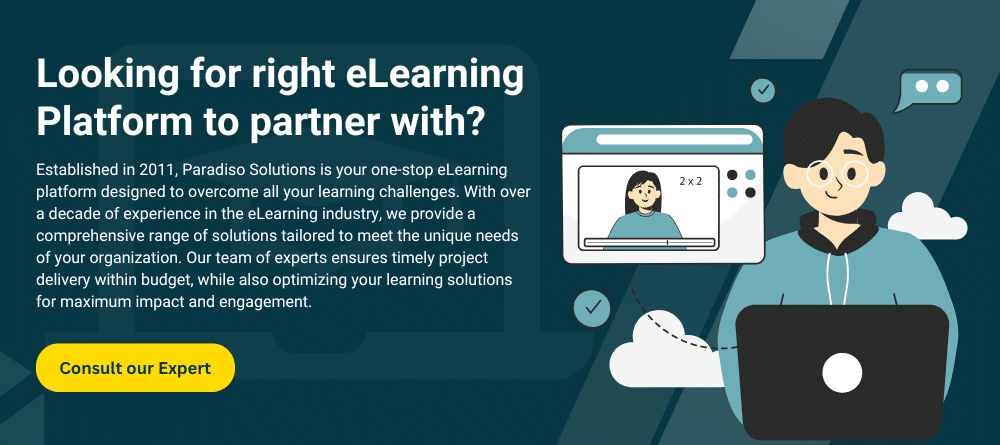Imagine you’re trying to learn something new, but the material is filled with unfamiliar references, confusing idioms, and cultural nuances that need clarification. Frustrating, right? This is where eLearning localization comes in, transforming the learning experience into one that feels like it was made just for you.
What is eLearning Localization and Its Importance

eLearning localization is not just about translating words; it’s about making learning content feel relevant and engaging no matter where you are. By tailoring courses to fit the cultural and linguistic needs of diverse audiences, it ensures that learners everywhere can connect with and understand the material thoroughly.
This blog will explore what eLearning localization means, why it’s essential, and how it can dramatically improve your learning experience. Whether you’re a global corporation looking to train employees across different regions or an educational institution aiming to reach international students, understanding eLearning localization is crucial. Let’s dive in and see how localized eLearning can make a difference for you and your audience.
Discover:
- What is eLearning Localization?
- How to Plan eLearning for Easy Localization
- What is the difference Between eLearning localization and eLearning translation?
- Understanding the Components of eLearning Localization: What Aspects Require Localization?
- Understanding the Various Types of eLearning Audiences
- Why is eLearning localization so important?
- Achieve Global Reach with Paradiso Solutions eLearning Localization
What is eLearning Localization?
eLearning localization adapts digital learning content to align with a target audience’s linguistic, cultural, and regional specifics. This goes far beyond mere translation. Localization involves modifying elements such as text, images, audio, and user interfaces to ensure they are culturally appropriate and relatable for learners in different regions.
For example, localization can include:
- Translating text and adjusting visual elements to match cultural norms.
- Converting units of measurement.
- Ensuring the tone and examples used are relevant to the local audience.
This holistic approach ensures that the learning experience is as natural and engaging as possible for all users, regardless of location.
How to Plan eLearning for Easy Localization
Planning for localization from the start can save you time and resources. Here are some steps to make your eLearning content localization-friendly:
- Use Neutral Images and Icons: Avoid culturally specific graphics that might be misunderstood in different regions.
- Keep Text Separate from Graphics: This makes translating and adapting the content easier without redesigning the visuals.
- Design with Flexibility: Ensure your design can accommodate text expansion or contraction when translated into different languages.
- Standardize Terminology: Create a glossary of terms to maintain consistency across all versions of your eLearning content.
What is the difference Between eLearning localization and eLearning translation?
eLearning translation and localization might seem similar, but they have distinct differences; while translation changes the language, localization transforms the learning experience to make it culturally relevant and effective.
eLearning translation
- Focus on Language: Translation involves converting text from one language to another, preserving the original meaning.
- Literal Approach: The primary goal is accurately reflecting the original content in a different language.
- Limited Scope: Translation typically deals only with the text and sometimes audio scripts without altering other elements.
eLearning Localization
- Cultural Adaptation: Localization encompasses translation and goes further by adapting content to fit cultural contexts, including idioms, customs, and visual elements.
- Holistic Approach: It considers every aspect of the learning experience, such as user interface design, multimedia elements, and contextual examples.
- Enhanced Relevance: Localization ensures the content feels natural and engaging to the target audience, addressing cultural nuances and preferences.
Understanding the Components of eLearning Localization: What Aspects Require Localization?
Effective eLearning localization involves more than just translating text. It requires a comprehensive approach to ensure all aspects of the learning experience are culturally relevant and accessible. Here are the key components that need to be localized:
Text and Scripts
- Translation and Adaptation: This includes translating and adapting the written content to fit the cultural context. This means using local idioms, expressions, and culturally relevant examples.
- Consistent Terminology: Translate technical terms, industry jargon, and specific phrases consistently across the course to maintain clarity and coherence.
Audio and Voiceovers
- Native Speakers: Use native speakers for voiceovers to ensure the pronunciation, intonation, and accent are appropriate for the target audience. This helps learners connect better with the content.
- Cultural Adaptation: Adapt the script to reflect cultural nuances. This might involve changing references or unfamiliar or relevant examples to the target audience.
Visuals and Graphics
- Cultural Relevance: Images, icons, and graphics should be culturally appropriate. Certain symbols or colors may have different meanings in different cultures.
- Localization-Friendly Design: Use visuals that are easy to adapt. Avoid embedding text in images, as this makes translation more complex. Instead, use captions or text overlays that can be easily modified.
- Language Adaptation: Ensure the user interface, including buttons, menus, and navigation elements, is translated and culturally adapted. This involves more than just translating text; it also includes adjusting the layout to accommodate different text lengths.
- User Experience: Adapt the user experience to match the expectations and habits of the target audience. For example, reading direction can differ (left-to-right vs. right-to-left), and familiar navigation conventions might vary.
Units of Measurement and Dates
- Measurement Conversion: Convert units of measurement (e.g., inches to centimeters, pounds to kilograms) to those used in the target region.
- Date and Time Formats: Adapt date, time, and currency formats to align with local standards. This helps avoid confusion and makes the content more relatable.
Cultural Sensitivity
- Avoiding Stereotypes: Be mindful of cultural stereotypes and biases. Ensure that the content is respectful and inclusive, avoiding any images or phrases that might be offensive or inappropriate.
- Adapted Examples and Scenarios: Use examples, case studies, and scenarios relevant to the learners’ cultural context. This increases relatability and understanding.
Technical and Compliance Considerations
- Local Regulations: Ensure that the content complies with local regulations and standards, especially in industries such as healthcare, finance, and legal.
- Technical Compatibility: Ensure that the technical aspects of the eLearning content, such as file formats and software compatibility, are suitable for the target audience’s devices and internet infrastructure.
Testing and Quality Assurance
- Localized Testing: Conduct thorough testing of the localized content with native speakers to ensure accuracy and cultural appropriateness. This includes linguistic, functional, and user experience testing.
- Feedback and Iteration: Gather input from the target audience and make necessary adjustments to improve the quality and effectiveness of the localized content.
Understanding the Various Types of eLearning Audiences
Different audiences have unique needs when it comes to eLearning:
- Corporate Staff: Localization helps global companies train their workforce effectively, ensuring all employees understand the content regardless of location.
- Academic Students: Educational institutions can offer diverse courses to students from different linguistic backgrounds.
- Compliance Training: Organizations can meet regulatory requirements by providing localized compliance training.
- Technical Training: Technology companies can localize training materials for global product launches and customer support.
- Reseller Networks: Localized training for business partners ensures they have the knowledge to represent your brand effectively.
Why is eLearning localization so important?
eLearning localization is crucial for several reasons:
Enhanced Engagement
Learners are more likely to engage with content that resonates with their cultural background. Localization makes the learning material more relatable, increasing engagement and participation rates.
Improved Learning Outcomes
When content is tailored to fit the learner’s cultural context, comprehension and retention improve. Learners understand and retain information better when presented in a familiar and relevant manner.
Expanded Reach
Localization allows organizations to extend their reach to a global audience. By providing content in multiple languages and cultural contexts, businesses and educational institutions can cater to a diverse range of learners.
Cultural Sensitivity
Ignoring cultural differences can lead to misunderstandings and alienate learners. Effective localization respects cultural identities, ensuring that content does not offend or exclude any group. This sensitivity fosters a more inclusive learning environment.
Business Benefits
For companies, localized eLearning content can improve employee training, leading to better performance and productivity. It also helps comply with local regulations and standards, which is particularly important in healthcare, finance, and legal industries.
Competitive Advantage
Organizations that invest in localization can stand out in the global market. Offering culturally adapted learning experiences demonstrates a commitment to inclusivity and quality, enhancing the brand’s reputation and competitiveness.
Achieve Global Reach with Paradiso Solutions eLearning Localization
By incorporating eLearning localization culturally and linguistically into your training programs, you ensure that learners from diverse backgrounds can fully engage with and benefit from the material.
Paradiso Solutions, a leader in comprehensive eLearning localization services, excels in adapting content for various cultural contexts. Our expertise ensures that your training programs are not only effective but also inclusive and respectful of cultural nuances. We handle everything from translating text and adapting visuals to modifying user interfaces and ensuring compliance with local regulations, providing you with a seamless and reliable service.
With Paradiso Solutions, you benefit from:
- Expert localization with intuitive AI tutors
- Comprehensive services include text translation, voiceovers, multimedia adaptation, and UI adjustments.
- Advanced technology powered by AI for efficient, high-quality localization.
- Deep customization tailored for every global corporation, educational institution, and business.
- Proven track record in enhancing global training programs for diverse audiences.














